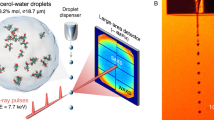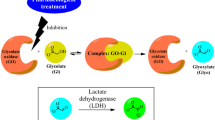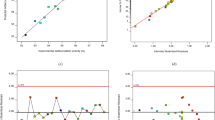Abstract
THE sonoluminescence from glycerine–water mixtures extending over the full range of 0–100 per cent glycerine has been investigated. A specially distilled supply of glycerine of 99.9 per cent purity was obtained and the sample of volume 5 ml. was contained in a 15-ml. quartz beaker cooled by circulating cold water. Fresh tap water was used, as tests showed that this gave the same results as distilled water. Cavitation was produced by a magnetostrictive window-type transducer coupled to a titanium double quarter-wave velocity transformer, the system being adjusted to deliver a constant acoustic power of 10 W at a frequency of 21.5 kc s over an area of 0.7 cm2. The transducer was monitored by an oscilloscope and valve voltmeter connected to a crystal accelerometer pick-up fixed to the transducer. The sonoluminescence was measured by a 13-stage E.M.I, photomultiplier tube ‘6255B’ sensitive from 1650 Å to 6500 Å, and the signal was detected by a high-impedance valve voltmeter.
This is a preview of subscription content, access via your institution
Access options
Subscribe to this journal
Receive 51 print issues and online access
$199.00 per year
only $3.90 per issue
Buy this article
- Purchase on SpringerLink
- Instant access to full article PDF
Prices may be subject to local taxes which are calculated during checkout
Similar content being viewed by others
References
Jarman, P., Proc. Phys. Soc., 73, 628 (1959).
Negishi, K., J. Phys. Soc. Japan, 16, 1450 (1961).
Kuttruff, H., Acustica, 12, 230 (Akustiche Beihefte) (1962).
Thorpe, J. F., Dictionary of Applied Chemistry, 6, 54 (Longmans, Green and Co., London, 1943).
Author information
Authors and Affiliations
Rights and permissions
About this article
Cite this article
YOUNG, F. Sonoluminescence from Glycerine–Water Mixtures. Nature 206, 706 (1965). https://doi.org/10.1038/206706a0
Published:
Issue date:
DOI: https://doi.org/10.1038/206706a0



